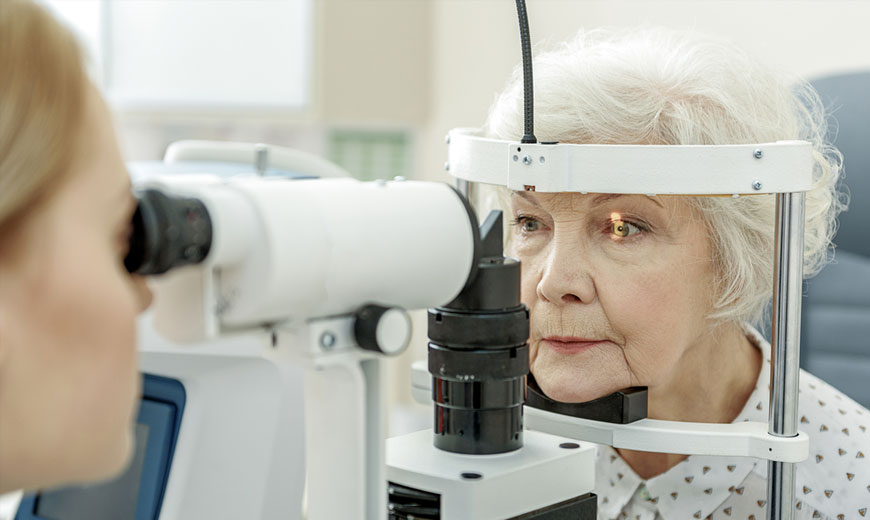Cataracts and glaucoma are two of the most common and serious eye diseases that affect millions of people worldwide. Cataract is a condition in which the lens of the eye becomes cloudy, leading to blurred vision and, if left untreated, total vision loss. It is the leading cause of blindness globally, especially among older people.
Glaucoma, on the other hand, is part of a group of diseases that damage the optic nerve and are often associated with increased intraocular pressure. If not detected and treated promptly, glaucoma can lead to irreversible vision loss and blindness. These diseases pose a serious threat to the vision of millions of people and require timely diagnosis and treatment.
What is glaucoma and what is a cataract?
- Cataract : Cataract is a condition in which the crystalline lens of the eye, whose main role is to focus light on the retina, becomes cloudy. This clouding leads to a deterioration in the quality of images, which can affect one or both eyes. These damages are classified according to the location of the opacity in the lens and can be divided into different subgroups depending on the cause of their occurrence. These include: age-related cataracts, cataracts after trauma, and cataracts associated with systemic diseases. The most common form of cataract is related to the aging of the lens. As we age, the lens becomes cloudy, leading to changes in the refraction of light, blurred vision, reduced sensitivity, and changes in color perception.
- Glaucoma : Glaucoma is a group of diseases that cause optic neuropathy, ie. damage to the optic nerve resulting in loss of neurons. Glaucoma can be of different types and causes can vary. Progressive damage to the optic nerve in glaucoma leads to defects in the visual field, starting from the periphery and moving to the central part of vision. As the disease progresses, the central visual acuity can also be affected, which can eventually lead to irreversible blindness .
What are the risk factors for developing these conditions?
Cataracts and glaucoma share many common risk factors. They can be classified into several categories:
Irreversible risk factors:
- Getting older: The risk of developing cataracts and glaucoma increases with age.
- Family history: Hereditary predisposition plays a role, and having the disease in the family increases the risk of developing the disease.
- Female gender: Women have a higher risk of developing cataracts than men.
- Myopia (short-sightedness): People with short-sightedness are at increased risk of developing glaucoma.
Presence of systemic diseases and medication intake:
- Diabetes : Diabetes can increase the risk of cataracts and glaucoma.
- Hypertension: High blood pressure is associated with an increased risk of glaucoma.
- Corticosteroid use: Systemic, topical, and inhaled corticosteroid use may increase the risk of developing cataracts and glaucoma.
Risk factors for concomitant eye diseases:
- Previous eye trauma and retinal surgery: Trauma and surgery to the eye can increase the risk of these diseases.
- Retinitis pigmentosa and uveitis: Inflammatory diseases of the eye, such as retinitis pigmentosa and uveitis, are associated with an increased risk of developing these diseases.
Other risk factors:
- Smoking : Smoking has been documented to increase the risk of cataracts.
- Exposure to ultraviolet rays: Prolonged exposure to ultraviolet radiation from the sun has been linked to the development of cataracts.
Prevention and lifestyle adjustments
Nutrition and cataracts
Studies show that increased consumption of certain nutrients can help reduce the risk of developing cataracts:
- Protein: Supports the health of the lens of the eye.
- Riboflavin (vitamin B2): Has antioxidant properties that can protect the lens from oxidative damage.
- Vitamin A : Necessary to maintain eye health and may reduce the risk of cataracts.
- Niacin (vitamin B3): Helps maintain visual function.
- Thiamine (vitamin B1): Important for the normal functioning of the nervous system and vision.
- Omega-3 fatty acids : They have anti-inflammatory properties and support eye health.
Nutrition and glaucoma
Although the research on the relationship between nutrition and glaucoma is not as extensive as that on cataracts, some of them show a connection between the occurrence of the disease and certain nutrients:
- Vitamin A and vitamin B1: People with open-angle glaucoma often have diets with lower levels of these vitamins, which can increase the risk of developing the disease.
- Nitrates and green leafy vegetables: Increased nitrate intake and consumption of green leafy vegetables are associated with a lower risk of developing open-angle glaucoma.
- Ultra-processed foods: Lower consumption of ultra-processed foods is also associated with a reduced risk of glaucoma.
Exercise, ultraviolet radiation and glaucoma
A 2024 study found that regular exercise can have antioxidant effects and suppress inflammation, which can help reduce the development and progression of cataracts and glaucoma.
Exposure to ultraviolet radiation (UVR) is associated with an increased risk of eyelid skin cancer, and there is evidence that medium-wave ultraviolet B (UVB) light contributes to the development of cortical cataracts.
In conclusion:
Glaucoma and cataracts are two of the most common eye diseases that can seriously impair vision if not treated in time. Although the causes and symptoms of these diseases are different, they require specialized attention and appropriate treatment. Early diagnosis and regular eye exams are key to successful management of both diseases, which can preserve vision and improve people’s quality of life.
Sources:
- Bao, YK, Xu, BY, Friedman, DS, Cho, A., Foster, PJ, Jiang, Y., Porporato, N., Pardeshi, AA, Jiang, Y., Munoz, B., Aung, T., & He, M. (2023). Biometric Risk Factors for Angle Closure Progression After Laser Peripheral Iridotomy. JAMA ophthalmology, 141(6), 516–524. https://doi.org/10.1001/jamaophthalmol.2023.0937
- Barkana, Y., Anis, S., Liebmann, J., Tello, C., & Ritch, R. (2006). Clinical utility of intraocular pressure monitoring outside of normal office hours in patients with glaucoma. Archives of ophthalmology (Chicago, Ill.: 1960), 124(6), 793–797. https://doi.org/10.1001/archopht.124.6.793
- Baudouin, C., Kolko, M., Melik-Parsadaniantz, S., & Messmer, EM (2021). Inflammation in Glaucoma: From the back to the front of the eye, and beyond. Progress in retinal and eye research, 83, 100916. https://doi.org/10.1016/j.preteyeres.2020.100916
- Bicket, AK, Le, JT, Azuara-Blanco, A., Gazzard, G., Wormald, R., Bunce, C., Hu, K., Jayaram, H., King, A., Otárola, F., Nikita, E., Shah, A., Stead, R., Tóth, M., & Li, T. (2021). Minimally Invasive Glaucoma Surgical Techniques for Open-Angle Glaucoma: An Overview of Cochrane Systematic Reviews and Network Meta-analysis. JAMA ophthalmology, 139(9), 983–989. https://doi.org/10.1001/jamaophthalmol.2021.2351
- Boland, MV, Ervin, AM, Friedman, DS, Jampel, HD, Hawkins, BS, Vollenweider, D., Chelladurai, Y., Ward, D., Suarez-Cuervo, C., & Robinson, KA (2013). Comparative effectiveness of treatments for open-angle glaucoma: a systematic review for the US Preventive Services Task Force. Annals of internal medicine, 158(4), 271–279. https://doi.org/10.7326/0003-4819-158-4-201302190-00008
- Bruno, CA, & Alward, WL (2002). Gonioscopy in primary angle closure glaucoma. Seminars in ophthalmology, 17(2), 59–68. https://doi.org/10.1076/soph.17.2.59.14721
- Casson, RJ, Chidlow, G., Wood, JP, Crowston, JG, & Goldberg, I. (2012). Definition of glaucoma: clinical and experimental concepts. Clinical & experimental ophthalmology, 40(4), 341–349. https://doi.org/10.1111/j.1442-9071.2012.02773.x
- Chang, JR, Koo, E., Agrón, E., Hallak, J., Clemons, T., Azar, D., Sperduto, RD, Ferris, FL, 3rd, Chew, EY, & Age-Related Eye Disease Study Group (2011). Risk factors associated with incident cataracts and cataract surgery in the Age-related Eye Disease Study (AREDS): AREDS report number 32. Ophthalmology, 118(11), 2113–2119. https://doi.org/10.1016/j.ophtha.2011.03.032


